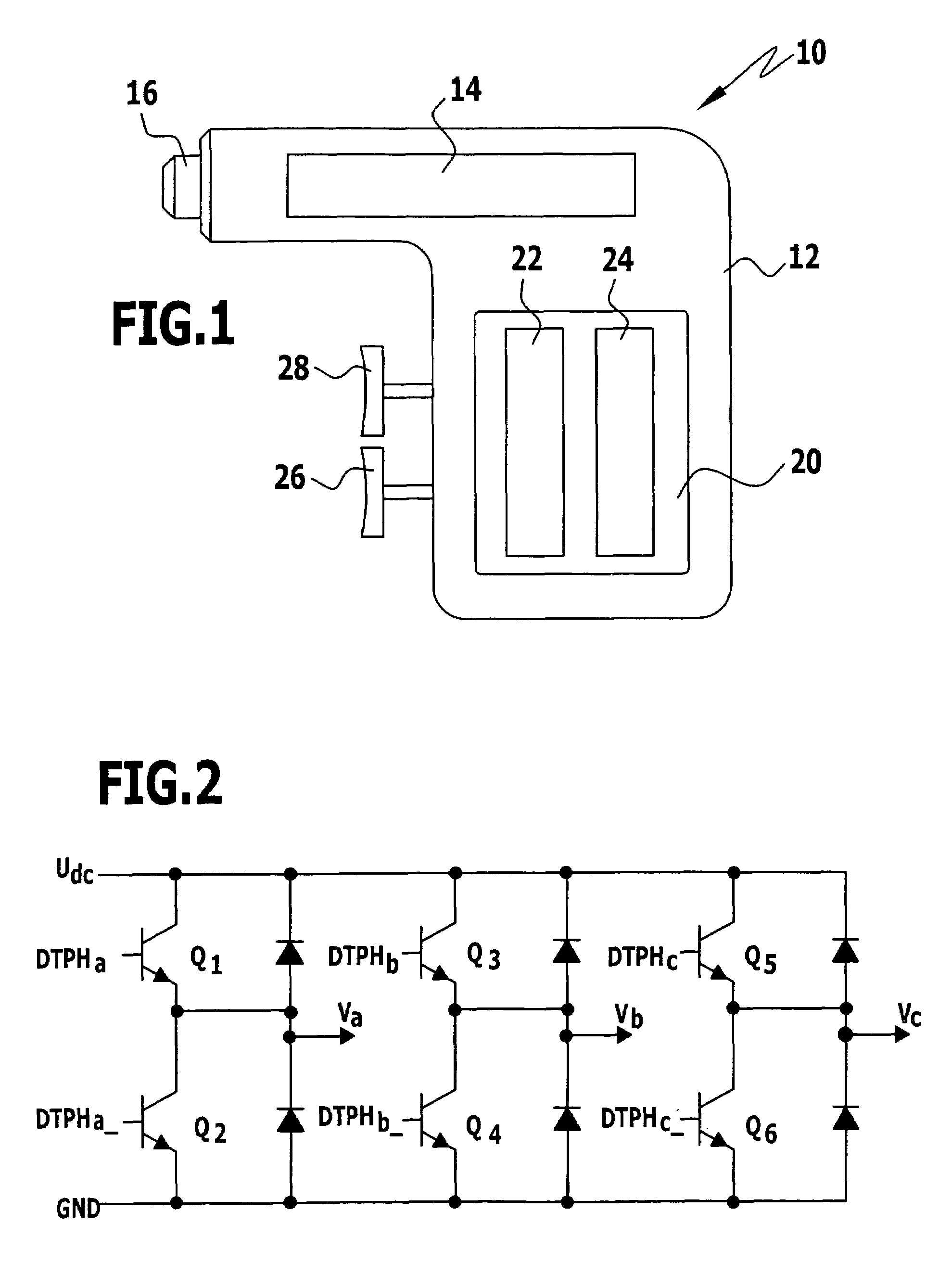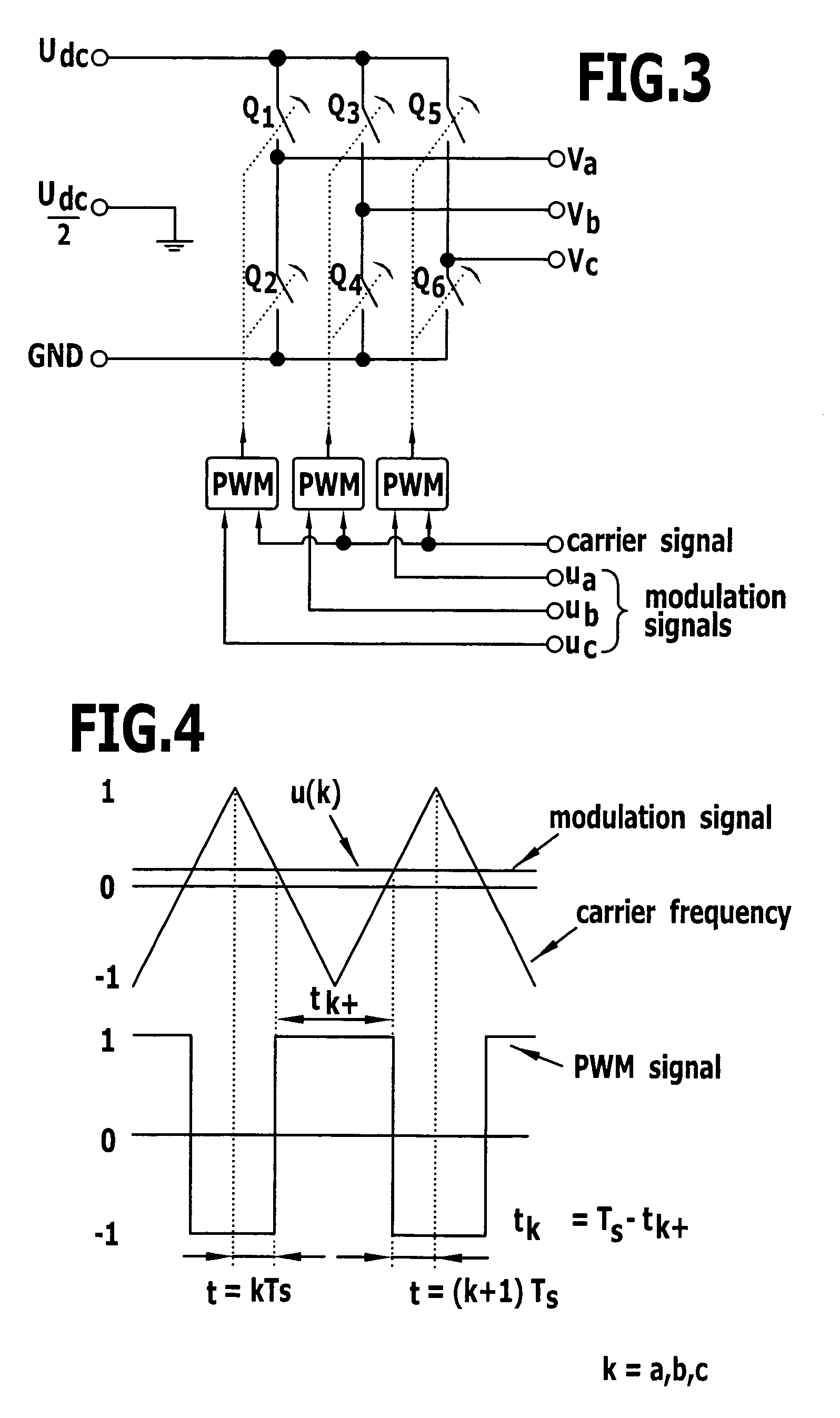Surgical machine and method for controlling and/or regulating a surgical machine
a surgical machine and control device technology, applied in the field of surgical machines, can solve the problems of increasing the demands on motor control and/or regulation, contact corrosion, and the need for position sensors to be integrated into the motor, and achieve the effects of different controlling and/or regulating, undesirable damping of the motor, and reduced motor efficiency
- Summary
- Abstract
- Description
- Claims
- Application Information
AI Technical Summary
Benefits of technology
Problems solved by technology
Method used
Image
Examples
Embodiment Construction
[0081]FIG. 1 shows a surgical accumulator machine generally designated by reference numeral 10, which comprises a housing 12, in one part of which a sensorless electric motor 14, which drives a drive shaft, not shown, of the accumulator machine 10, is arranged parallel to the longitudinal axis of this housing part. At the end of the drive shaft there is arranged a coupling 16, by means of which the accumulator machine can be connected to any kind of tool, for example, drills, mills, chisels and also saws.
[0082]A handle 18, into which a power pack 20 is insertable, protrudes transversely from the housing part of the housing 12 that receives the electric motor 14. The power pack 20 comprises a rechargeable battery 22 and a motor controller 24. A power / speed push-button 26 and an operating mode selector switch 28, which can be pressed into the handle 18 substantially parallel to a longitudinal axis of the electric motor 14, are provided for starting operation of the accumulator machine...
PUM
 Login to View More
Login to View More Abstract
Description
Claims
Application Information
 Login to View More
Login to View More - R&D
- Intellectual Property
- Life Sciences
- Materials
- Tech Scout
- Unparalleled Data Quality
- Higher Quality Content
- 60% Fewer Hallucinations
Browse by: Latest US Patents, China's latest patents, Technical Efficacy Thesaurus, Application Domain, Technology Topic, Popular Technical Reports.
© 2025 PatSnap. All rights reserved.Legal|Privacy policy|Modern Slavery Act Transparency Statement|Sitemap|About US| Contact US: help@patsnap.com



